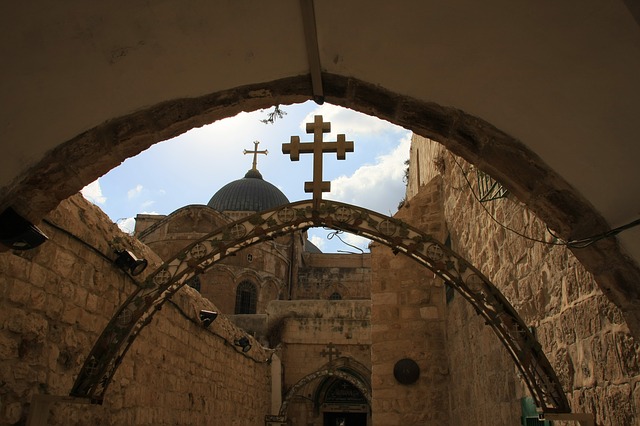From Bethlehem to Golgotha, a sign of contradiction
That child which Mary and Joseph contemplated in adoration, and which the angels watched with their hosannas, and about which billions of souls will not cease to repeat, in verse and poetry, their emotions as redeemed people, is the seed of a crucified person: in him is that seed Simon called the “sign of contradiction,” the “ruin and resurrection of many.” Before his death, Caiaphas, the High Priest, would say it «subverted the nation,» and Zacchary, before his birth, had hailed: «the salvation of the people and the light which enlightens those lying in the darkness.»
In so doing, the axis of dialectics was affixed to his cradle, from which the history of the world will be determined: an axis in the form of a cross.
Igino Giordani, The two cities, New City, Rome, 1961, p. 26
The cries of the women
More than others, it was probably the women who pitied that son of such a young mother, such a gentle, sweet and handsome son, taken to the gallows like sheep to the slaughterhouse. And without fully comprehending the meaning of that sacrifice, they associated in their soul the idea of the Easter lamb to that son of man.
And so, through the alleyways, with the passing of the centurion whose horse scraped the cobblestones with his hoofs, a din arose and mixed with the sneers, laughter, insults, words of pity, enjoyment, terror, tenderness and beastliness, an anticipation of the treatment in store for all times and places, upon the passing of Christ.
Igino Giordani, Jesus of Nazareth, SEI ed., Torino, 1950, pp.363-364.
The Crucifixion
Along the way silence hung in the air amid the crowd, and within it was the echo of the hammering of nails that adjusted the rods of the cross on which the victims were hung. We can’t imagine how those strikes hammered the heart of the mother: the heart of our mother, Mary, who in her pain could no longer cry.
When the victims were nailed, the crosses were raised and strongly fixed and secured into the ground, with stones and compacted soil.
«Damned are those hanging from the wood,» as written by law (Deuteronomy 21:23) and Jesus, condemned, hung from the cross, and began the stage of his supreme offering.
Igino Giordani, Jesus Nazareth, cit., pp.367-368.
Death on the cross
Fending herself from the crowd, Mary found herself before the crucifix. If almost all the apostles were missing (except for John), the women instead were there. In the solar glory of wood and flesh, it was in that moment the highest podium of the universe, the point of which touched the Eternal: man and God were reunited in that streak of blood and the broken stems of divine fatherhood. Among the tortures, like the pains of birth, the man-God gave humanity new life. Towards three in the afternoon of that horrific spectacle between earth and heaven, from his scaffold Jesus screamed: “My God, my God, why have you forsaken me?” Noting his immense thirst and those cracked lips and half-open mouth, with the point of his lance, the soldier passed a sponge imbued with vinegar. He sucked it avidly and when he could speak said: “The time has come.” And with that characteristic cry that seemed as if the soul was being stripped off the body, he exclaimed: “Father, into your hands I commit my spirit.” And bowing his head, died. So the great drama ended.
Igino Giordani, Jesus of Nazareth, cit., pp.369-372.




